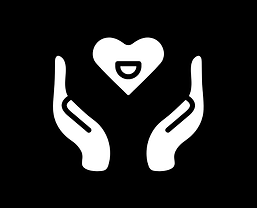The Enneagram
The map that shows why you do what you do — and how to finally stop doing it.
.png)
Why This Teaching Matters
Look, most men already know what they’re doing wrong.
You’ve replayed the argument. You’ve heard yourself say that thing you swore you’d never say again.
The problem isn’t awareness — it’s understanding.
The Enneagram is like holding up a mirror and finally seeing the pattern behind the reaction.
It helps you catch the stories your nervous system keeps whispering:
“If I stay in control, I’m safe.”
“If I keep everyone happy, I’ll be loved.”
“If I never slow down, I’ll never feel the pain.”
You don’t have to memorize numbers or geek out on theory —
you just need to know how your version of self-protection keeps hijacking your peace.
Personality Isn’t Who You Are — It’s What Protected You
Every man builds armor. Some wear it like a badge, others like a disguise.
That armor is your personality — the version of you that kept you safe when life got rough.
The Enneagram just helps you spot the armor and ask,
“Do I still need it, or is it time to put it down?”

The 9 Ways Men Try to Feel Safe
Here’s a quick snapshot. You’ll probably see a bit of yourself in more than one:
-
Type 1 — The Perfectionist: “If I get it right, I’ll be okay.” Always fixing, correcting, or improving. Bro, sometimes the world doesn’t need a mechanic — it needs a hug.
-
Type 2 — The Helper: “If I make everyone happy, they’ll keep me around.” You give until you resent it. Learn to let people love you back.
-
Type 3 — The Achiever: “If I win, I’m worth it.” You’ve got goals, drive, hustle — but you can’t outwork shame, my guy.
-
Type 4 — The Creative: “If I stay deep and different, I matter.” Feelings on 10. But remember, pain isn’t proof of depth — peace is.

-
Type 5 — The Thinker: “If I keep my distance, I’m safe.” You know everything except how to need people. Connection won’t drain you — it’ll refuel you.
-
Type 6 — The Loyalist: “If I’m prepared for the worst, I won’t get blindsided.” You call it realistic — God calls it fear wearing a tool belt.
-
Type 7 — The Adventurer: “If I stay busy and have fun, nothing can hurt me.” You can’t outrun emptiness. Sometimes joy’s hiding in boredom.
-
Type 8 — The Challenger: “If I stay strong, no one can hurt me.” You’re fire — protect, lead, build — but learn to turn down the heat before you burn the house.
-
Type 9 — The Peacemaker: “If I stay out of conflict, everything’s fine.” You’re not lazy, you’re just tired of being overlooked. Your voice matters — use it.

How It Plays Out
Every type has the same problem: we confuse safety with identity.
When you’re stressed or triggered, your type takes the wheel.
When you’re grounded and connected to God, that same energy becomes your gift.
You don’t need to erase your type — you just need to redeem it.

What God Does With It
The Enneagram doesn’t put you in a box.
It shows you the one you built — and invites Jesus to knock a few walls down.
He already knows your patterns:
your control (Type 8), your people-pleasing (Type 2), your perfectionism (Type 1), your fear of being ordinary (Type 4).
He’s not mad about it — He’s here to free you from it.
“Be transformed by the renewing of your mind.” — Romans 12:2
In Him, every type finds redemption:
-
The One learns grace.
-
The Two learns self-worth.
-
The Three learns honesty.
-
The Four learns peace.
-
The Five learns trust.
-
The Six learns faith.
-
The Seven learns presence.
-
The Eight learns tenderness.
-
The Nine learns purpose.


How It Fits Into the KTL
The Enneagram sits in the Trunk of the Tree — the part that holds everything together.
It’s where you start taking ownership of your story instead of reacting to it.
It connects the dots between:
-
Your nervous system (Polyvagal Theory)
-
Your emotional roots (Inner Child & Parenting)
-
And your growth path (False Self → True Self)
When you understand why you armor up, you finally get to choose when to put it down.
Practice (Simple, Not Complicated)
-
Notice your go-to move. What’s your “safety behavior”? Control? Humor? Withdrawal?
-
Catch it in the act. When you feel triggered, pause and name what’s happening.
-
Breathe. You don’t need to fix it — just stay.
-
Ask: “What is this part of me protecting?”
-
Invite God in. “Jesus, teach me another way.”
That’s how awareness turns into transformation.

Closing Thoughts
Compassion doesn’t erase pain — it transforms it.
Because love that stays in the storm is the love that heals.